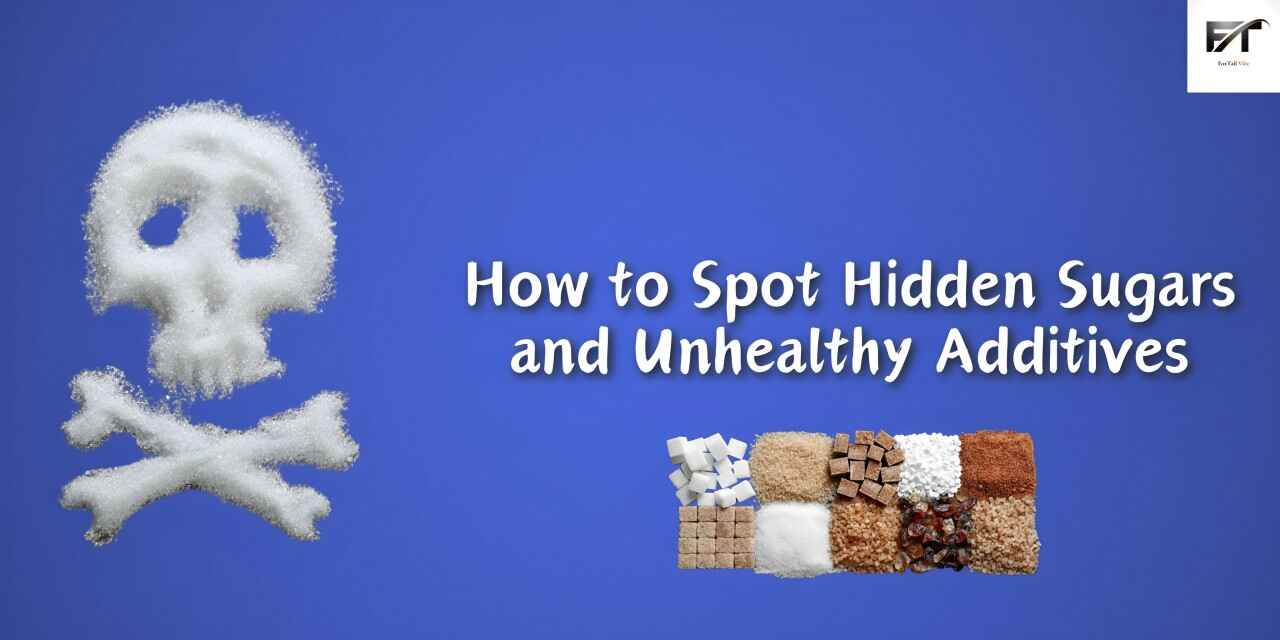In today’s fast-paced world, it’s easy to fall into the trap of consuming hidden sugars and unhealthy additives without even realizing it. These sneaky ingredients can be lurking in many of the foods we eat every day, from seemingly innocent snacks to savory sauces. Understanding how to spot these hidden culprits is crucial for making informed choices about what we put into our bodies. In this guide, we’ll explore simple yet effective strategies for identifying hidden sugars and unhealthy additives in your food.
Understanding Hidden Sugars
Sugar hides in many forms, and food manufacturers often use various names to disguise it on ingredient labels. While it’s easy to spot sugar when it’s listed plainly, such as “sugar” or “sucrose,” many other terms can indicate the presence of added sugars. Here are some common aliases for sugar to watch out for:
- High fructose corn syrup (HFCS): A highly processed sweetener derived from corn.
- Fructose, glucose, and sucrose: These are different types of sugars that can be added to foods.
- Dextrose, maltose, and lactose: Other forms of sugar often used as sweeteners or thickeners.
- Cane juice, cane syrup, and molasses: Derived from sugar cane, these ingredients are essentially concentrated forms of sugar.
- Fruit juice concentrate: While it may sound healthy, fruit juice concentrate is essentially a concentrated source of fruit sugars.
- Agave nectar, honey, and maple syrup: Although they are natural sweeteners, they are still high in sugar and should be consumed in moderation.
Tips for Identifying Hidden Sugars

- Read Ingredient Labels: When shopping for packaged foods, always check the ingredient list for any added sugars. Ingredients are listed in descending order by weight, so if sugar or one of its aliases is near the top of the list, it’s a sign that the product likely contains a significant amount of added sugar. Learn How to Read Food Labels Perfectly for Better Nutrition.
- Watch Out for “Low-Fat” or “Fat-Free” Products: These products often compensate for the reduced fat content by adding extra sugar to enhance flavor. Be wary of foods labeled as “low-fat” or “fat-free” and check the sugar content carefully.
- Be Mindful of Sneaky Sugary Foods: Many processed foods that you wouldn’t expect to contain sugar, such as pasta sauces, salad dressings, and flavored yogurt, can be loaded with hidden sugars. Always check the labels of these products before purchasing.
- Opt for Whole Foods: One of the best ways to avoid hidden sugars is to choose whole, unprocessed foods whenever possible. Fresh fruits and vegetables, lean proteins, and whole grains are naturally low in added sugars and unhealthy additives.
Identifying Unhealthy Additives
In addition to hidden sugars, many processed foods contain unhealthy additives such as artificial colors, flavors, and preservatives. These additives are often used to enhance the taste, appearance, or shelf life of food products but may have negative effects on health in the long run. Here are some common unhealthy additives to watch out for:
- Artificial Colors: Ingredients like FD&C Yellow No. 5 and Red No. 40 are artificial colors that are often added to processed foods to make them more visually appealing. These synthetic dyes have been linked to hyperactivity and other behavioral issues, especially in children.
- Artificial Flavors: Synthetic flavorings are used to mimic the taste of natural ingredients but may contain chemicals and additives that can be harmful in large quantities. Look for foods that contain natural flavors instead of artificial ones.
- Preservatives: Chemical preservatives like BHA, BHT, and TBHQ are added to many processed foods to extend their shelf life. While these additives help prevent spoilage, they have been linked to various health issues, including cancer and hormone disruption.
Tips for Avoiding Unhealthy Additives
- Choose Whole Foods: As with hidden sugars, opting for whole, unprocessed foods is the best way to avoid unhealthy additives. Fresh fruits and vegetables, lean meats, and whole grains are naturally free of artificial colors, flavors, and preservatives.
- Read Labels Carefully: When buying packaged foods, take the time to read the ingredient list and nutrition label carefully. Look for foods with simple, recognizable ingredients and avoid products that contain a long list of additives and preservatives.
- Look for Natural Alternatives: When shopping for processed foods, choose products that are made with natural flavors and colors derived from real ingredients like fruits, vegetables, and spices.
- Be Cautious of Highly Processed Foods: Foods that are heavily processed, such as fast food, packaged snacks, and sugary beverages, are more likely to contain unhealthy additives. Limit your consumption of these foods and opt for healthier alternatives whenever possible.
By being vigilant about reading labels and choosing whole, unprocessed foods whenever possible, you can avoid hidden sugars and unhealthy additives and make healthier choices for you and your family. Taking small steps to reduce your intake of these harmful ingredients can have a big impact on your overall health and well-being in the long run.
Also Read – 10 Best Immune-Boosting Foods for Cold and Flu Season
